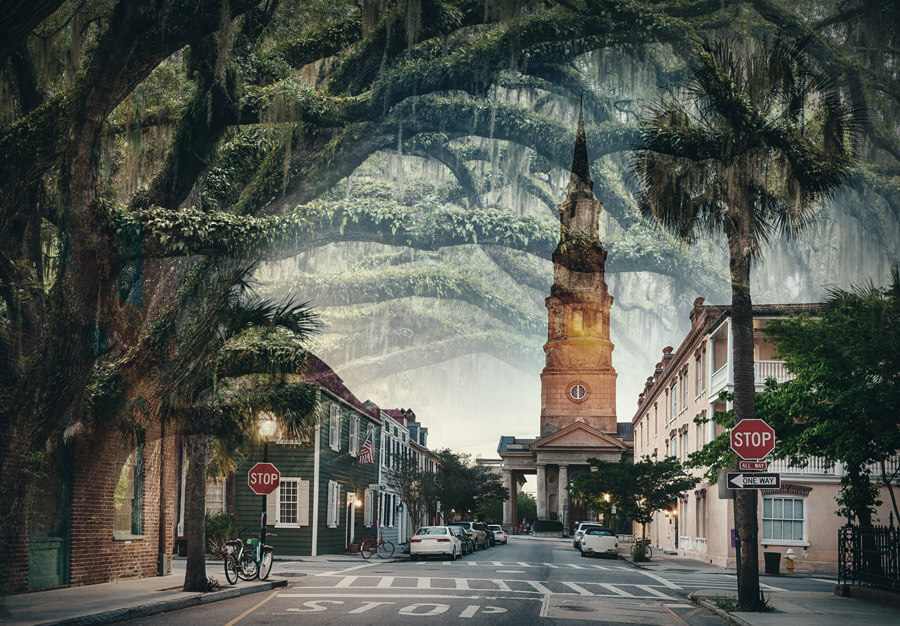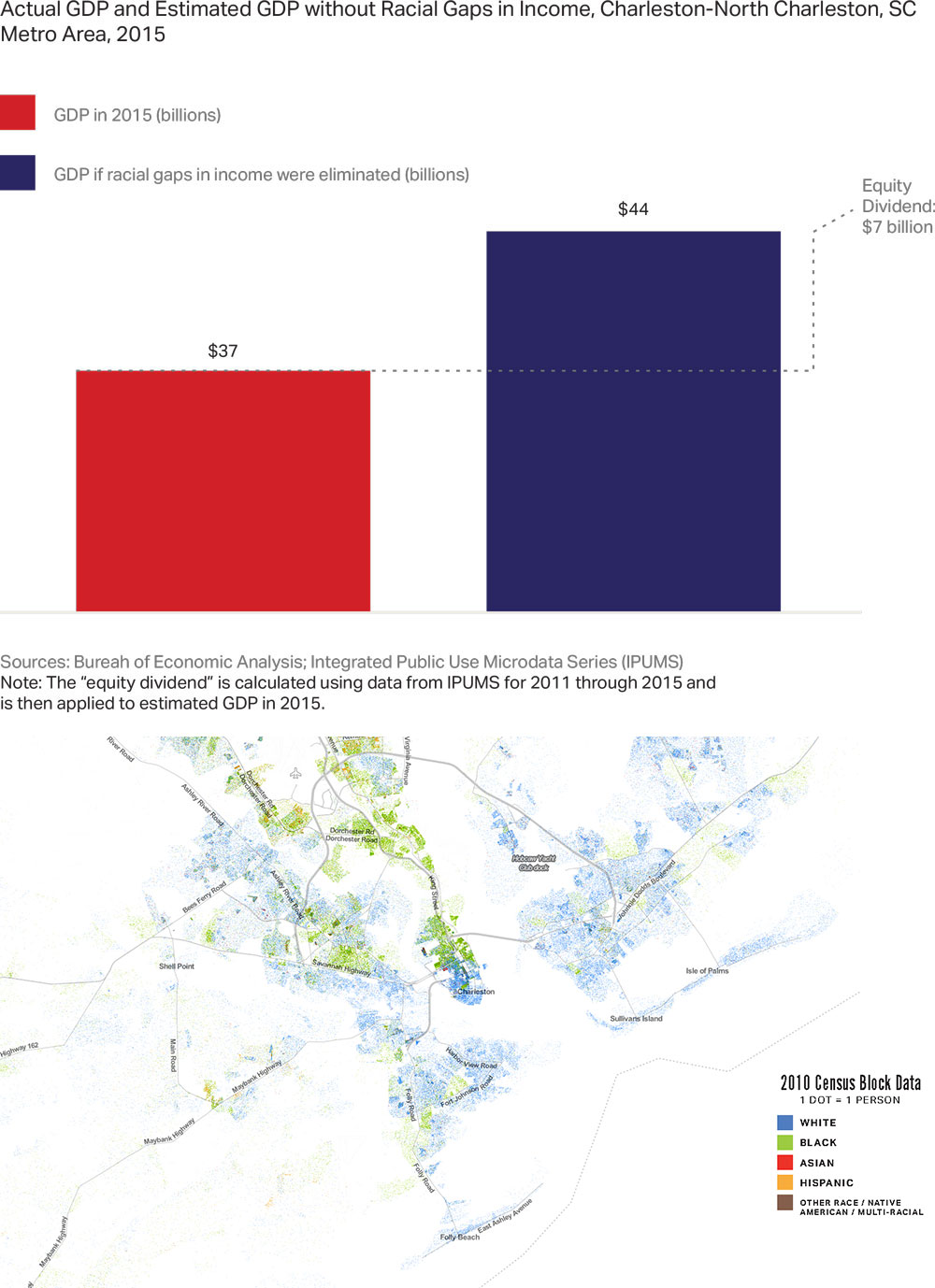Where We’ve Been
Charleston, SC

Charleston is the largest city in South Carolina. Historians estimate that nearly half of all Africans brought to America as slaves arrived here, making this city the only major antebellum one that had a majority-enslaved population. In 2015, a white supremacist entered a black church and murdered nine black parishioners. This resulted in the Confederate flag’s removal from the State Capitol and the ignition of a major nationwide debate about Confederate statues. In the last three decades, Charleston has become more diverse. Since 1980, the population that identifies as people of color grew from 33.4 percent to 36.8 percent. Since 2000, Charleston’s Latino population has had the largest growth. The median wage for workers of color is $6 less than the median wage for white workers. Impairing Charleston’s future is the 38 percent of jobs that require some college education. While more than 50 percent of whites meet this benchmark, only 25 percent of blacks and 44 percent of Latinos can compete. In Charleston, SC, we conducted focus groups with non-college-educated white, black and Latino residents. Learn more by reading the full report.
